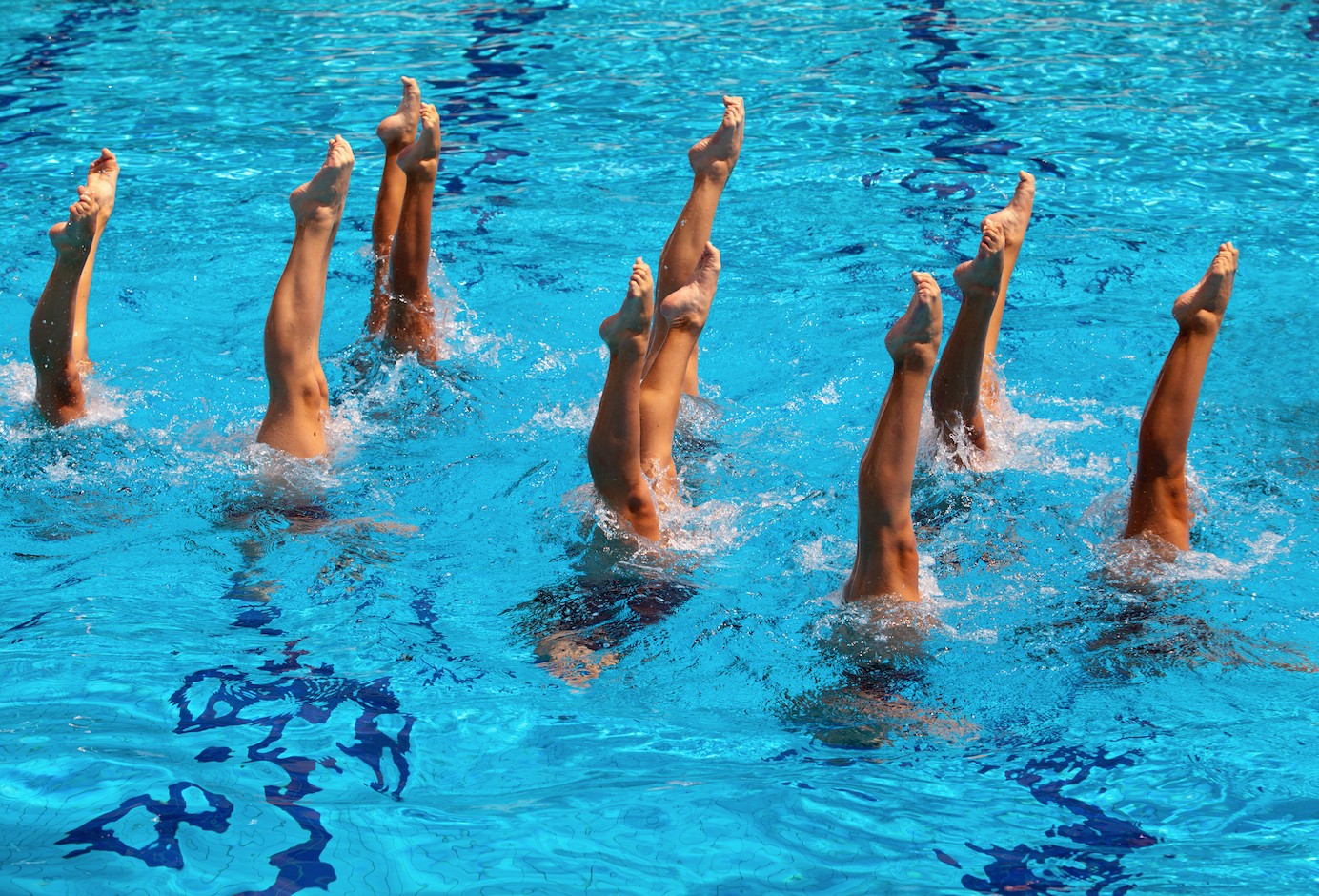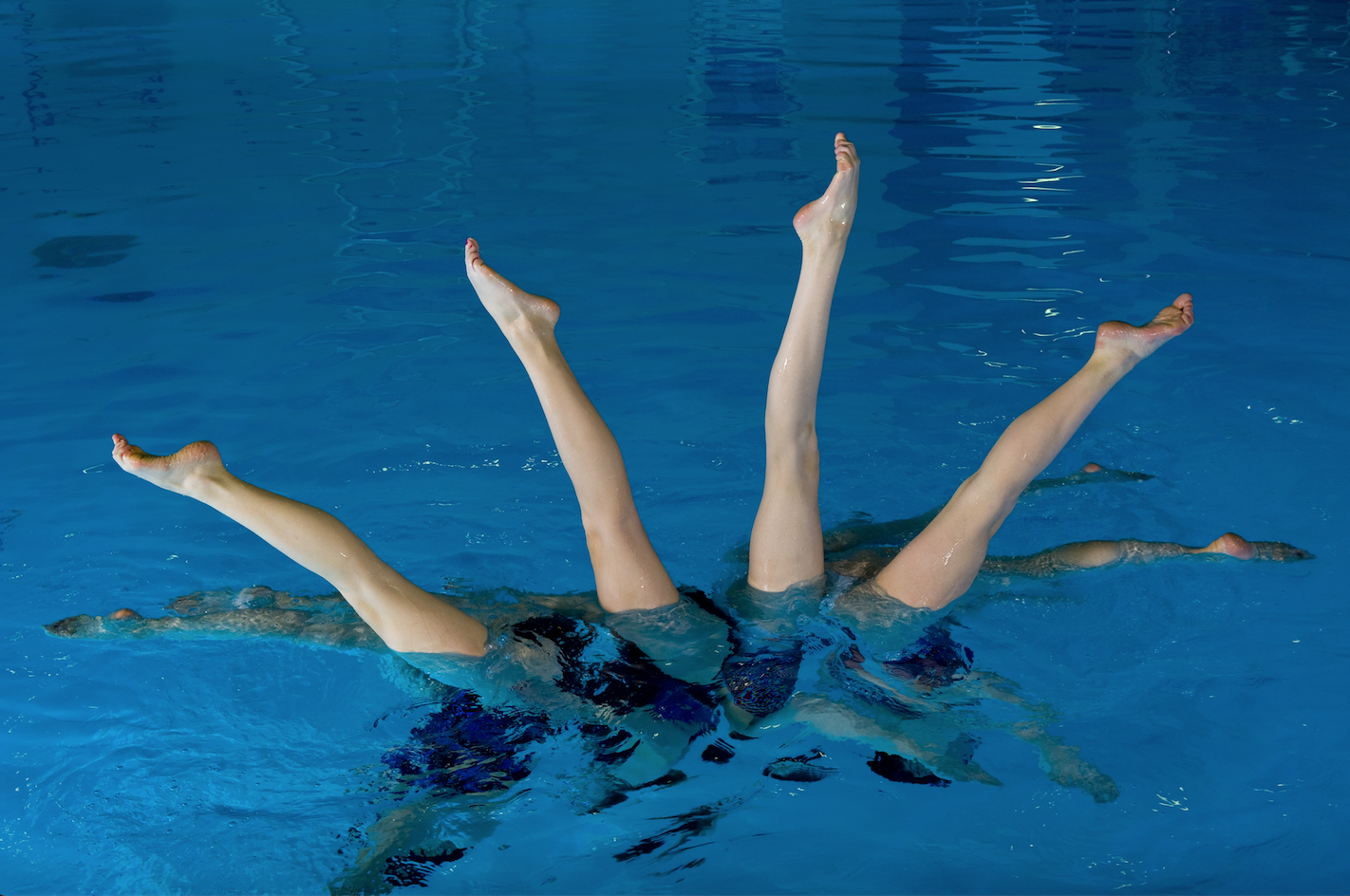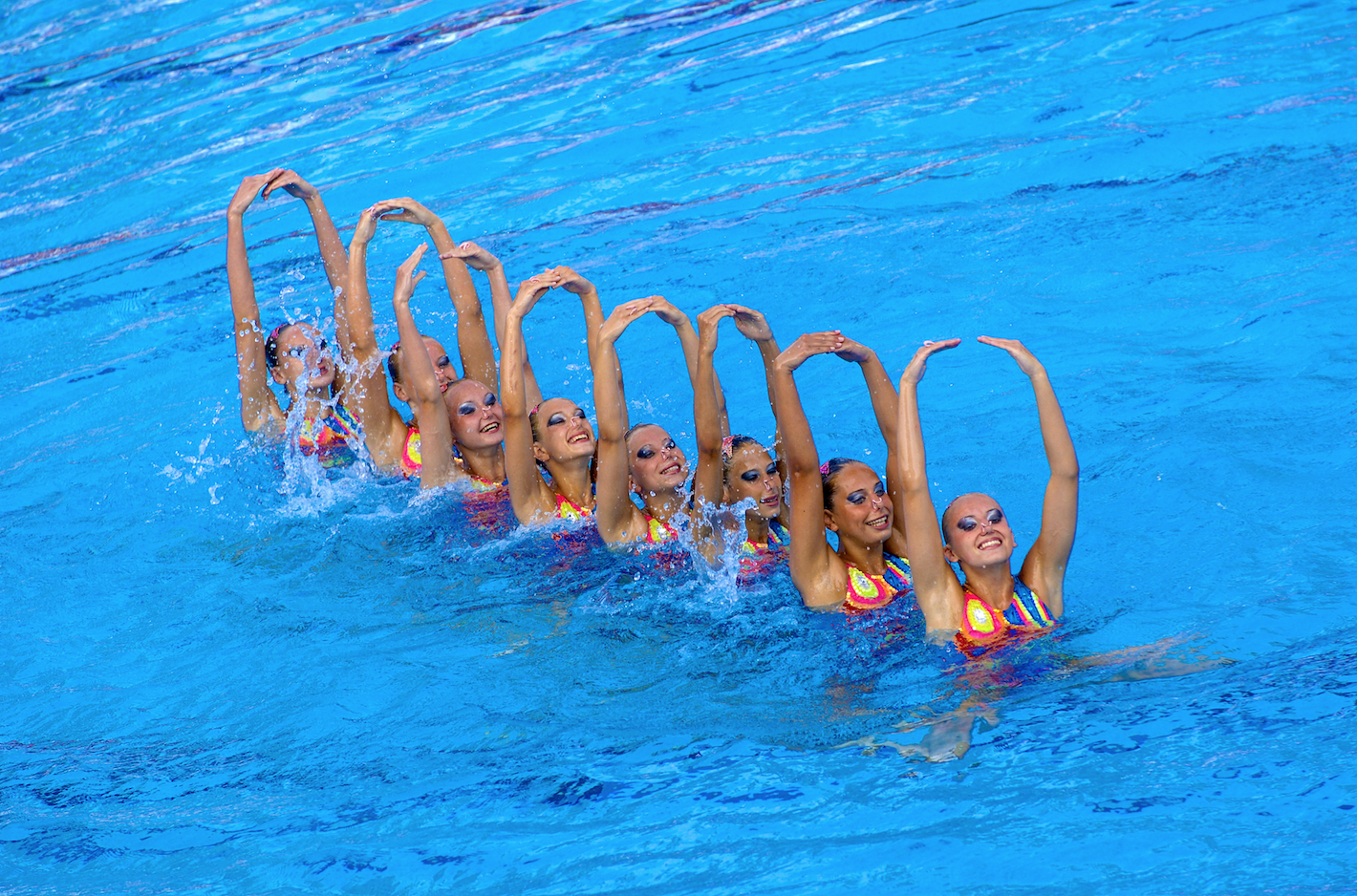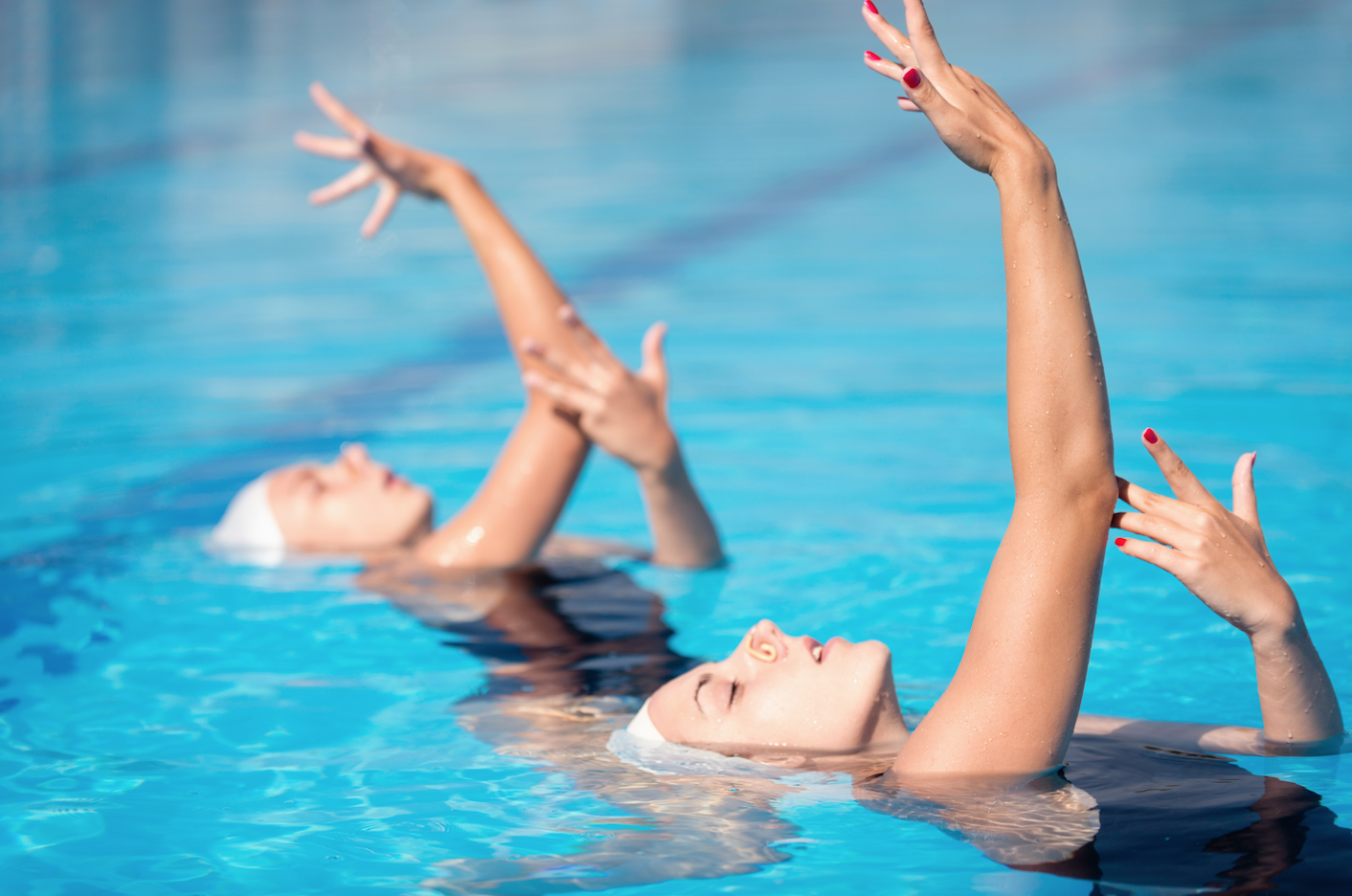The Ballet of Synchronized Swimming
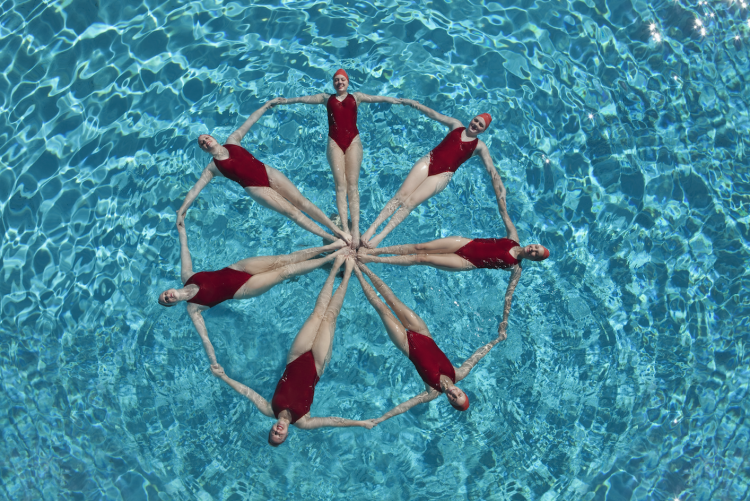
You have probably watched on television the fascinating “underwater dances” performed competitively in swimming pools, but how many actually know what synchronized swimming really is? I’m pretty sure that, watching competitive swimming, you've asked yourself questions like: “How do they stay underwater so long?” or “Why are they wearing ridiculously bright makeup?”
As a synchronized swimmer with over 10 years of training, I can say that there is much more to this sport than the beautiful ballet-like motions you see girls perform in competitions.
Synchronized swimming first was known, at the turn of the twentieth century, as water ballet. The first recorded competition was in Berlin in 1891 and later became popular as a component to music hall performances. It was popularized in America by Annette Kellerman, an Australian who performed in a glass tank as an underwater ballerina at the New York Hippodrome.
Image credit: Shutterstock (wellphoto)Even if it’s a team sport, there is still individual competitions and rankings, which makes this sport highly competitive. Attitudes can change within a second. One minute you’re in a supportive team, the next minute you act as if you don’t know each other.
There are five different routine divisions admitted to the official competitions. Solos (one person performing), duets (two people), trios (three people), teams (eight people) and combos. The combos consist of 10-12 swimmers and begin with the whole team performing together after which giving way to the solo, duet, and trio formation and finishing with the whole team again. There is also a division into technical and free routines. In the technical routine you need to demonstrate a combination of required elements, whereas in the free routine you are expected to demonstrate your craftiness and creativity.
Training is extremely difficult and demands a high level of performance in many disciplines. In Russia, I trained six times a week; each session lasted from three to five hours. There is a division of every session: two hours on land, and three hours in water (give or take depending on how long the training was scheduled).
On different days of the week, we had different disciplines on land: cardio training, choreography, muscle building, acrobatics and stretching. The stretching training had to be done at home every day and I usually was doing my homework while sitting on a split.
The water training always begins with a warm-up of about 2 kilometers in different strokes. Once we arrived at a more advanced level of training, our coach made us wear one-kilo weights on each hand and leg and a five-kilo belt. After a few pool laps like that, when we finally took off the weights we had the impression that we would be able to walk on water. While training times and patterns differ from country to country, synchronized swimming training in Russia is considered the toughest in the world.
Image credit: Shutterstock
To answer the question about staying underwater for so long, synchronized swimmers don't have gills, they just hold their breath underwater like any normal human being. There is one difference however: our lung volume is about double the size (more than 4 liters) of most people. This permits us to stay underwater for a few minutes, however the rules of the competitions don’t permit you to stay underwater for more than 40 seconds. The unofficial record of holding their breath underwater among the synchro stars is held by Natalia Ishchenko and Svetlana Romashina, who went without oxygen for more than four minutes.
One extremely important accessory to staying underwater for a longer time is the nose clip. They come in different shapes, colors, and materials and prevent the water from coming into your nose. If it gets knocked down during the routine (which happens often and is extremely annoying) the performers usually have an extra nose clip tucked in they're bathing suit or on their finger. Sometimes the routine is so fast-paced that you don’t have time to put on the extra nose clip. When this happened, we just had to suffer through the routine, controlling the water by pushing air out of our nose and blocking our nostrils with our upper lip. One lung capacity exercise that I did was breathing from a gas mask that contained air from the highest point of the Himalayas. This helped our lungs adapt to rough breathing conditions, stretching and expanding them to contain a larger amount of air.
When it comes to the “dress code” for the competitions, there are extremely strict regulations. The tailoring of the bathing suite is written in the codes of official competition attire down to a millimeter. Since bathing suits can’t be see-through, swimmers achieve that effect with nude fabric. Before you enter in to international competitions, you decorate your bathing suit yourself (or with the help of your mother). I remember sitting up late at night, after completing all my schoolwork, sewing on the tiny details of the outfits design.
Image credit: Shutterstock
When it comes to the makeup, there is one rule: the brighter the better. It is crucial for the judges, audience, and cameras to capture every single expression on the performer's face. We apply heavy makeup, but give preference to normal makeup rather than waterproof as it's more vivid. To keep the eye shadow vibrant and visible, we mix it with vaseline and instead of blush powder we blend red lipstick on our cheeks.
There is also an extremely strict set of rules for hair maintenance. If you have even one strand of hair on your forehead at the end of the performance, the judges might penalize your team by taking off half a point for the presentation per swimmer. The solution for many synchronized swimmers is applying gelatine on their hair. After making the hair style (by fixing it with over a hundred hairpins) you apply hot gelatine used in baking. Once the gelatine hardens on you hair (literally makes it rock hard) you put on your elaborate headpiece. To undo this hairstyle after the performance it takes you up to three hours. You first have to put your hair under extremely hot water in the shower so the gelatine will melt away and then you take about an hour to remove all the pins from your hair.
Russia has been the leading country in synchronized swimming since 1998. Before that Canada and the United States kept winning one after the other, sharing twenty-one World Championships between them. The swimmers with the most awards in the history of Synchronized Swimming are Natalia Ishchenko, with nineteen gold medals from World Championships, followed by Svetlana Romashina. The most Olympic medals were won by Anastasia Davydova, who won five golds.
Another interesting detail of the sport that the music heard underwater by swimmers through a hydrophone, which is mainly used during the competitions and incorporated within the few last training sessions before the competition. Usually, the coach taps a beat (which is the count to the music) on a metal rod so the swimmers can count it out underwater. Also, swimmers are obliged to always smile during the performance. Some coaches recommend to start smiling underwater before, then pop out on the surface and take a breath through gritted teeth.
Image credit: Shutterstock
Recently, more and more men have started to be admitted into the sport. I had the great opportunity to train and perform with Alexander Maltsev who won gold in duets on the 2015 World Championship as well as on the European Championship in 2016.
Overall, synchronized swimming is a beautiful sport for spectators but a boot camp for the performers. You cannot imagine how much training is put into every routine and every competition. The stress levels are enormous and constant tears and nervous breakdowns are the norm.
No matter how difficult the training is, the result is always worth it. The incredible feeling that you get when your team is awarded a gold medal, that way making your coach and parents proud, is indescribable.

